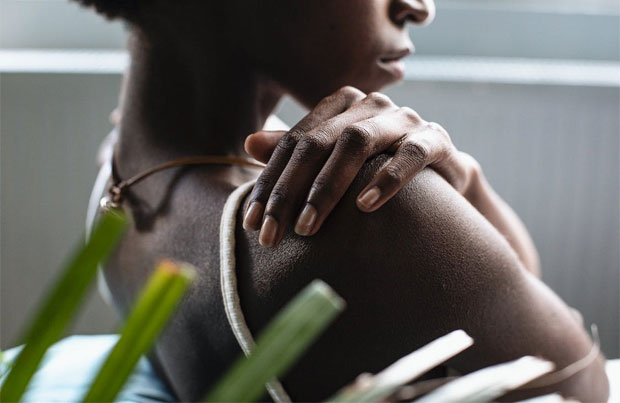CBD Patches – Can CBD Patches Help Relieve Pain?

CBD Patches – Can CBD Patches Help Relieve Pain?
In the realm of pain management, an increasing number of individuals are seeking natural alternatives to prescription medications. Among the myriad of natural remedies available, CBD, or cannabidiol, is gaining popularity. Particularly, CBD patches have been spotlighted for their potential to alleviate pain. But do they truly work? Let’s delve into the science behind CBD patches and their use in pain management.
- What is a CBD patch?
CBD patches are adhesive patches infused with cannabidiol that are applied to the skin. They work by delivering a slow and steady release of CBD through the skin and into the bloodstream. This method, known as transdermal delivery, allows for the CBD to interact with the endocannabinoid system, potentially offering relief from pain and inflammation.
- Do CBD patches work?
According to a study published in the European Journal of Pain, there is substantial evidence supporting the use of cannabinoids for pain relief1. CBD, being a cannabinoid, is believed to have analgesic properties. In the context of CBD patches, a study in the journal Molecules suggested that transdermal delivery of cannabinoids could help alleviate pain and inflammation2. However, more research is needed to fully understand the efficacy of CBD patches for pain relief.
- Why use a CBD patch for pain?
CBD patches offer several advantages over other forms of CBD. They provide a consistent and prolonged release of CBD, eliminating the need for multiple doses throughout the day. This can be particularly beneficial for chronic pain sufferers. Furthermore, CBD patches bypass the digestive system, which means higher bioavailability and quicker onset of effects.
- How do CBD patches compare with other CBD products for pain?
When compared to other CBD products, patches stand out for their convenience and ease of use. Unlike oils or capsules, patches provide a longer-lasting effect without the need for repeated dosing. They also offer a more targeted approach to pain relief, as they can be applied directly to the area of discomfort.
- Who should use a CBD patch?
CBD patches can be a viable option for individuals suffering from chronic pain conditions like arthritis or fibromyalgia. They may also be beneficial for those experiencing localized pain, such as muscle soreness or inflammation. However, as with any treatment, it’s crucial to consult with a healthcare provider before starting the use of CBD patches.
How to use CBD patches
- Dosage
Determining the right dosage of CBD can be challenging due to individual differences in metabolism, body weight, and severity of symptoms. It’s recommended to start with a lower dose and gradually increase until the desired effects are achieved. Most CBD patches on the market range from 10 to 50 mg of CBD per patch.
- Safety and side effects
CBD is generally considered safe with a good tolerability profile3. However, some individuals may experience side effects such as dry mouth, fatigue, or changes in appetite or weight. It’s also important to note that CBD may interact with certain medications, enhancing or diminishing their effects.
- Interactions
CBD can interact with a variety of medications, including some types of anti-epileptic drugs, blood thinners, and certain types of antidepressants. If you’re taking any medication, it’s crucial to consult with your healthcare provider before using CBD patches.
- How long do CBD patches usually take to work?
The onset of effects from CBD patches can vary depending on individual factors, but generally, users may start to feel effects within 20 to 60 minutes after application4.
- How often should CBD patches be replaced?
Most CBD patches are designed to last for 24 hours, although this can vary between products. It’s recommended to follow the manufacturer’s instructions regarding the frequency of replacement.
- Are there any specific areas of the body where CBD patches should not be applied?
CBD patches should be applied to clean, dry skin. It’s best to avoid areas with hair, as well as irritated or injured skin. Common application sites include the upper arm, chest, or back.
In conclusion, CBD patches offer a promising alternative for pain management. While research is ongoing, current evidence supports the potential of CBD, delivered through patches, to help alleviate pain and inflammation. As always, individuals should consult with a healthcare provider to determine if CBD patches are the right choice for their specific needs.
Footnotes
- European Journal of Pain: Cannabinoids in the management of difficult to treat pain – https://onlinelibrary.wiley.com/doi/abs/10.1111/j.1533-2500.2008.00215.x
- Molecules: Cannabinoid Delivery Systems for Pain and Inflammation Treatment – https://www.ncbi.nlm.nih.gov/pmc/articles/PMC6222489/
- Cannabis and Cannabinoid Research: An Update on Safety and Side Effects of Cannabidiol – https://www.liebertpub.com/doi/10.1089/can.2016.0034
- Journal of Pain Research: Transdermal cannabidiol reduces inflammation and pain-related behaviours in a rat model of arthritis – https://www.ncbi.nlm.nih.gov/pmc/articles/PMC4851925/
Guest Article.





